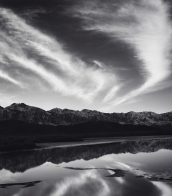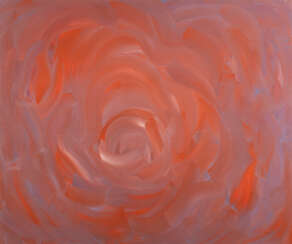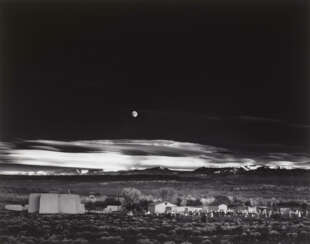hernandez

Diango Hernández is a Cuban artist who lives and works between Düsseldorf, Germany and Havana. From 1994 to 2003, Hernández was involved with Ordo Amoris Cabinet, which he co-founded with Ernesto Oroza, Juan Bernal, Francis Acea and Manuel Piña. He is married to artist Anne Pöhlmann.


Diango Hernández is a Cuban artist who lives and works between Düsseldorf, Germany and Havana. From 1994 to 2003, Hernández was involved with Ordo Amoris Cabinet, which he co-founded with Ernesto Oroza, Juan Bernal, Francis Acea and Manuel Piña. He is married to artist Anne Pöhlmann.


Diango Hernández is a Cuban artist who lives and works between Düsseldorf, Germany and Havana. From 1994 to 2003, Hernández was involved with Ordo Amoris Cabinet, which he co-founded with Ernesto Oroza, Juan Bernal, Francis Acea and Manuel Piña. He is married to artist Anne Pöhlmann.


Diango Hernández is a Cuban artist who lives and works between Düsseldorf, Germany and Havana. From 1994 to 2003, Hernández was involved with Ordo Amoris Cabinet, which he co-founded with Ernesto Oroza, Juan Bernal, Francis Acea and Manuel Piña. He is married to artist Anne Pöhlmann.


Diango Hernández is a Cuban artist who lives and works between Düsseldorf, Germany and Havana. From 1994 to 2003, Hernández was involved with Ordo Amoris Cabinet, which he co-founded with Ernesto Oroza, Juan Bernal, Francis Acea and Manuel Piña. He is married to artist Anne Pöhlmann.


Diango Hernández is a Cuban artist who lives and works between Düsseldorf, Germany and Havana. From 1994 to 2003, Hernández was involved with Ordo Amoris Cabinet, which he co-founded with Ernesto Oroza, Juan Bernal, Francis Acea and Manuel Piña. He is married to artist Anne Pöhlmann.


Daniel Hernández Morillo was a Peruvian painter in the Academic style who spent most of his working life in Paris. He also served as the first Director of the Escuela Nacional de Bellas Artes.





William Shakespeare was a British poet and playwright and writer.
William's father, John Shakespeare, was a merchant and official in Stratford. There are reports that he was a sailor for a time before joining a theater company in London. Beginning in the 1590s, Shakespeare began writing plays, and in 1593 he published a poem, Venus and Adonis, which became popular. He dedicated it to the Duke of Southampton, who was a philanthropist and patron of talent, and soon his business was booming.
From 1592 to 1600 Shakespeare wrote his dramas and romantic comedies "Richard III", "The Taming of the Shrew", "Romeo and Juliet", "A Midsummer Night's Dream" and "The Merchant of Venice", as well as the comedies "Much Ado About Nothing", "Twelfth Night" and the tragedy "Julius Caesar". The playwright's business was so successful that he even bought a large house in Stratford. In 1599, Shakespeare became one of the owners, playwright and actor of the new theater "Globe". In 1603 King James took Shakespeare's troupe under his direct patronage. In the mature period, the great playwright turned to tragedies, there were "Hamlet", "Othello", "King Lear", "Macbeth" and others.
Although in the 19th century researchers had some doubts about the authorship of many of these works, William Shakespeare is considered the greatest English playwright, one of the best playwrights in the world. His plays have been translated into all major languages and to this day form the basis of the world theatrical repertoire, most of them have been screened many times. According to the Guinness Book of Records, Shakespeare remains the world's best-selling playwright, and his plays and poems have sold more than 4 billion copies in the nearly 400 years since his death.


Ansel Easton Adams was an American photographer and environmentalist, celebrated for his black-and-white images of the American West, particularly Yosemite National Park. His profound connection with nature was not only the subject of his art but also the essence of his environmental advocacy, earning him a revered place in both the art and conservation worlds.
Ansel Adams' early exposure to the beauty of nature and a supportive family environment nurtured his dual interests in music and photography. His photographic journey began with a simple Kodak Box Brownie camera, which he used during his early visits to Yosemite, a place that would become the central theme of his life's work. Ansel Adams' dedication to photography and the environment was interwoven, as he utilized his art to advocate for the conservation of America's natural landscapes.
In the 1930s, Adams co-founded Group f/64, advocating for photographic purity and sharpness of focus, principles that would define his work. His role in establishing the photography department at the Museum of Modern Art in New York underscored his commitment to elevating photography as a respected art form. Ansel Adams' work has been exhibited in prestigious institutions such as the Smithsonian American Art Museum and MoMA, showcasing his contributions to American art and environmentalism.
For collectors and art experts, Ansel Adams' legacy transcends his iconic images; it lies in his ability to merge aesthetic excellence with a passionate message of environmental stewardship. His photographs not only capture the grandeur of landscapes but also serve as a timeless call to preserve the natural world.
To delve deeper into the world of Ansel Easton Adams and stay updated on new product sales and auction events related to his work, signing up for updates is a step toward embracing the heritage of a pivotal figure in art and environmental advocacy.
Join our community of art and antique enthusiasts to honor Adams' vision and ensure his message continues to inspire future generations.


Ansel Easton Adams was an American photographer and environmentalist, celebrated for his black-and-white images of the American West, particularly Yosemite National Park. His profound connection with nature was not only the subject of his art but also the essence of his environmental advocacy, earning him a revered place in both the art and conservation worlds.
Ansel Adams' early exposure to the beauty of nature and a supportive family environment nurtured his dual interests in music and photography. His photographic journey began with a simple Kodak Box Brownie camera, which he used during his early visits to Yosemite, a place that would become the central theme of his life's work. Ansel Adams' dedication to photography and the environment was interwoven, as he utilized his art to advocate for the conservation of America's natural landscapes.
In the 1930s, Adams co-founded Group f/64, advocating for photographic purity and sharpness of focus, principles that would define his work. His role in establishing the photography department at the Museum of Modern Art in New York underscored his commitment to elevating photography as a respected art form. Ansel Adams' work has been exhibited in prestigious institutions such as the Smithsonian American Art Museum and MoMA, showcasing his contributions to American art and environmentalism.
For collectors and art experts, Ansel Adams' legacy transcends his iconic images; it lies in his ability to merge aesthetic excellence with a passionate message of environmental stewardship. His photographs not only capture the grandeur of landscapes but also serve as a timeless call to preserve the natural world.
To delve deeper into the world of Ansel Easton Adams and stay updated on new product sales and auction events related to his work, signing up for updates is a step toward embracing the heritage of a pivotal figure in art and environmental advocacy.
Join our community of art and antique enthusiasts to honor Adams' vision and ensure his message continues to inspire future generations.


Ansel Easton Adams was an American photographer and environmentalist, celebrated for his black-and-white images of the American West, particularly Yosemite National Park. His profound connection with nature was not only the subject of his art but also the essence of his environmental advocacy, earning him a revered place in both the art and conservation worlds.
Ansel Adams' early exposure to the beauty of nature and a supportive family environment nurtured his dual interests in music and photography. His photographic journey began with a simple Kodak Box Brownie camera, which he used during his early visits to Yosemite, a place that would become the central theme of his life's work. Ansel Adams' dedication to photography and the environment was interwoven, as he utilized his art to advocate for the conservation of America's natural landscapes.
In the 1930s, Adams co-founded Group f/64, advocating for photographic purity and sharpness of focus, principles that would define his work. His role in establishing the photography department at the Museum of Modern Art in New York underscored his commitment to elevating photography as a respected art form. Ansel Adams' work has been exhibited in prestigious institutions such as the Smithsonian American Art Museum and MoMA, showcasing his contributions to American art and environmentalism.
For collectors and art experts, Ansel Adams' legacy transcends his iconic images; it lies in his ability to merge aesthetic excellence with a passionate message of environmental stewardship. His photographs not only capture the grandeur of landscapes but also serve as a timeless call to preserve the natural world.
To delve deeper into the world of Ansel Easton Adams and stay updated on new product sales and auction events related to his work, signing up for updates is a step toward embracing the heritage of a pivotal figure in art and environmental advocacy.
Join our community of art and antique enthusiasts to honor Adams' vision and ensure his message continues to inspire future generations.





















































![[VIERGE] - DE QUEVEDO, Francisco - Pablo de Segovie [con illustrazioni di Daniel Vierge]. Paris: Pelletan e Vierge, 1902.](/assets/image/picture_1242223/eefcf/fs0ag4p2qnyzczds4qv0ryrqva2fqwxkljqshqv-utcv6kk7vi1zx7hxvnaqjjea1608650265jpg__fix_374_244.jpeg)
![[VIERGE] - DE QUEVEDO, Francisco - Pablo de Segovie [con illustrazioni di Daniel Vierge]. Paris: Pelletan e Vierge, 1902.](https://veryimportantlot.com/assets/image/picture_1242223/eefcf/fs0ag4p2qnyzczds4qv0ryrqva2fqwxkljqshqv-utcv6kk7vi1zx7hxvnaqjjea1608650265jpg__fix_374_244.jpeg)



















